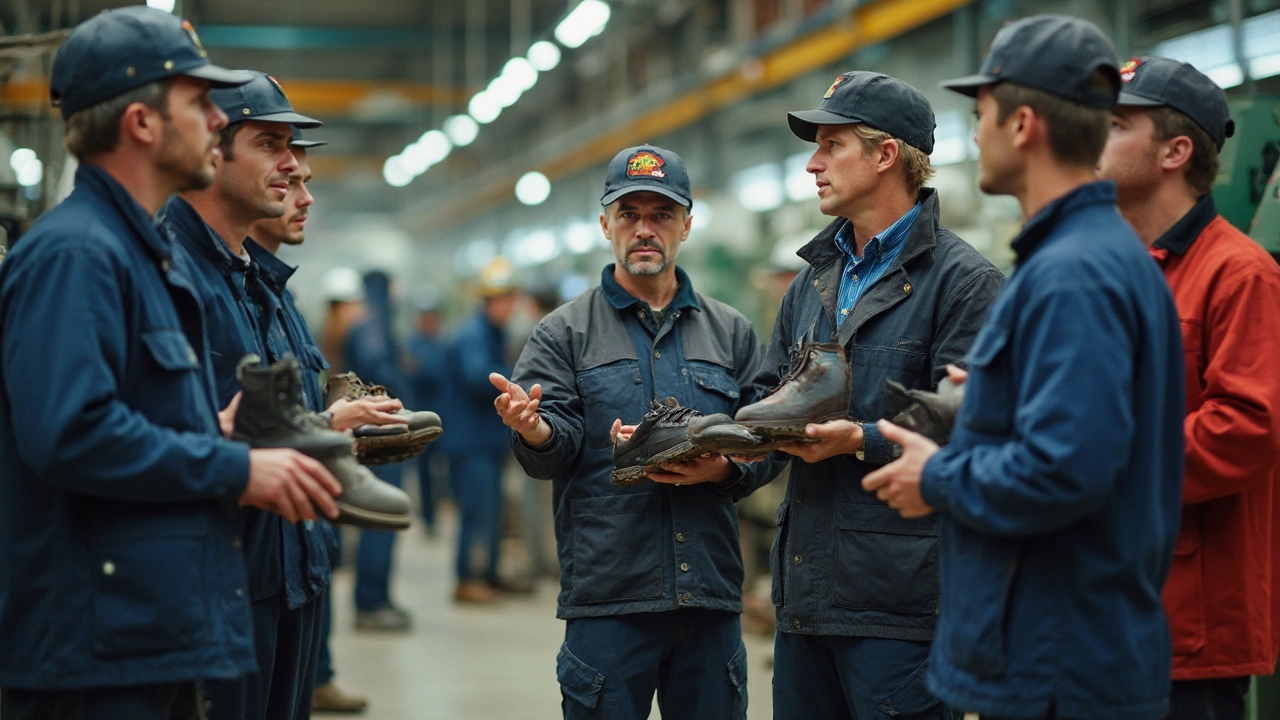Steel-Toe Shoes: Safety, Law, and Practical Tips
When talking about steel-toe shoes, a type of reinforced footwear designed to protect the toes from crushing injuries and heavy impacts. Also known as steel toe boots, they are a core piece of personal protective equipment for many trades. These shoes combine a hardened steel cap with a sturdy leather or composite upper, delivering impact resistance, puncture protection, and slip resistance. Because they meet specific safety standards, steel-toe shoes are often required on construction sites, factories, and any environment where heavy objects might fall. In short, steel-toe shoes are the frontline defense that keeps workers moving safely through hazardous tasks.
How Steel-Toe Shoes Fit Into Workplace Safety
Understanding Personal Protective Equipment (PPE), gear like helmets, gloves, and protective footwear that shields workers from job‑site risks is key to seeing why steel-toe shoes matter. PPE is mandated by UK health‑and‑safety law, and the employer’s duty to provide appropriate gear is spelled out in the Personal Protective Equipment at Work Regulations 1992. This means that if a job requires foot protection, the company must supply or fund compliant steel-toe shoes for its staff. The rule isn’t just paperwork; it directly links to reduced injury rates and lower insurance costs. For construction workers, the most common user group, the presence of steel-toe shoes can be the difference between a minor bruise and a serious fracture when a concrete slab shifts or a toolbox falls.
Another crucial piece of the puzzle is the employer’s responsibility, which we’ll refer to as Employer Responsibilities, the legal and practical obligations to ensure safe working conditions, including supplying suitable PPE. These responsibilities include assessing risks, selecting the right grade of steel-toe shoes (often classified as EN ISO 20345 Level 1 or 2), and providing training on proper wear and maintenance. Companies that neglect these duties not only breach legislation but also expose workers to avoidable hazards. For example, an employer who supplies non‑compliant footwear may face fines and increased workers' compensation claims. The link between employer duties and steel-toe shoes underscores a broader safety culture where each piece of equipment supports the others, creating a safer overall environment.
Beyond the legal side, the Construction Industry, the sector that includes building, civil engineering, and related trades where steel-toe shoes are most often required drives innovation in footwear design. Modern steel-toe shoes balance protection with comfort, featuring breathable membranes, cushioned midsoles, and ergonomic lasts that reduce fatigue on long shifts. Durability is another attribute; a well‑chosen pair can last years even under tough conditions, making them a cost‑effective investment for both workers and businesses. When selecting a pair, look for features like slip‑resistant soles, puncture‑proof plates, and proper sizing to avoid toe cramping. These attributes not only meet safety standards but also enhance daily comfort, turning a safety requirement into a practical workwear staple.
Below, you’ll find a curated selection of articles that dive deeper into each of these angles—legal obligations, buying guides, and the latest trends in protective footwear. Whether you’re an employer figuring out compliance or a worker seeking the best fit, the posts ahead will give you clear, actionable insights to make informed decisions about steel-toe shoes.
- Cleo Fairchild
- Mar, 17 2025
- 0 Comments
Can a Company Force You to Wear Steel-Toe Shoes?
Steel-toe shoes can be a contentious topic in workplaces, especially when it comes to safety and employee rights. This article discusses whether companies can require their employees to wear these protective shoes. It explores the balance between safety regulations and personal comfort while providing practical tips and insights. Understand why employers set these rules and how employees can navigate their footwear requirements.
